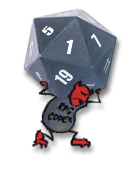- Joined
- Jan 1, 2025
- Messages
- 4
For me, the elephant in the room when it comes to requiring hardware RT is that in most scenarios you don't really need fully realtime lighting. When it comes to global illumination you can often achieve the same or better results on very weak hardware using good old-fashioned pre-baked lightmaps plus some tricks to make sure dynamic objects blend in OK.






You lose the ability to have completely dynamic lighting, like shooting out lights in a stealth game. But as far as I can tell, neither Indiana Jones nor Doom really take advantage of that. Generally at most you either have a day/night cycle (in which case you can have multiple lightmaps and fade between them) or you have temporary dynamic lights like a flashlight or muzzle flash, which can be solved in a perfectly acceptable way with traditional methods.
In fact, RT and especially PT is currently only really practical using a temporal approach where the work is divided over several frames, meaning it can't react fast enough to be used for something like a grenade or muzzle flash. You can see that in the first few seconds of this UE5 demo:
As each light comes on, it takes a while for that light to fully influence its surroundings...
RT does give you much better reflections, but that's the kind of thing that's easily left as an optional extra effect, not something the whole game needs to be built around.
I can definitely imagine that leaning on RT makes for less work for the devs, but that's not very compelling for me as a customer.
"Using these new techniques, our game looks about the same (maybe even slightly worse) than if we'd used old techniques, while running slower and requiring more powerful hardware. It was easier to make though! That'll be £70 (~$87) please."






You lose the ability to have completely dynamic lighting, like shooting out lights in a stealth game. But as far as I can tell, neither Indiana Jones nor Doom really take advantage of that. Generally at most you either have a day/night cycle (in which case you can have multiple lightmaps and fade between them) or you have temporary dynamic lights like a flashlight or muzzle flash, which can be solved in a perfectly acceptable way with traditional methods.
In fact, RT and especially PT is currently only really practical using a temporal approach where the work is divided over several frames, meaning it can't react fast enough to be used for something like a grenade or muzzle flash. You can see that in the first few seconds of this UE5 demo:
As each light comes on, it takes a while for that light to fully influence its surroundings...
RT does give you much better reflections, but that's the kind of thing that's easily left as an optional extra effect, not something the whole game needs to be built around.
I can definitely imagine that leaning on RT makes for less work for the devs, but that's not very compelling for me as a customer.
"Using these new techniques, our game looks about the same (maybe even slightly worse) than if we'd used old techniques, while running slower and requiring more powerful hardware. It was easier to make though! That'll be £70 (~$87) please."









